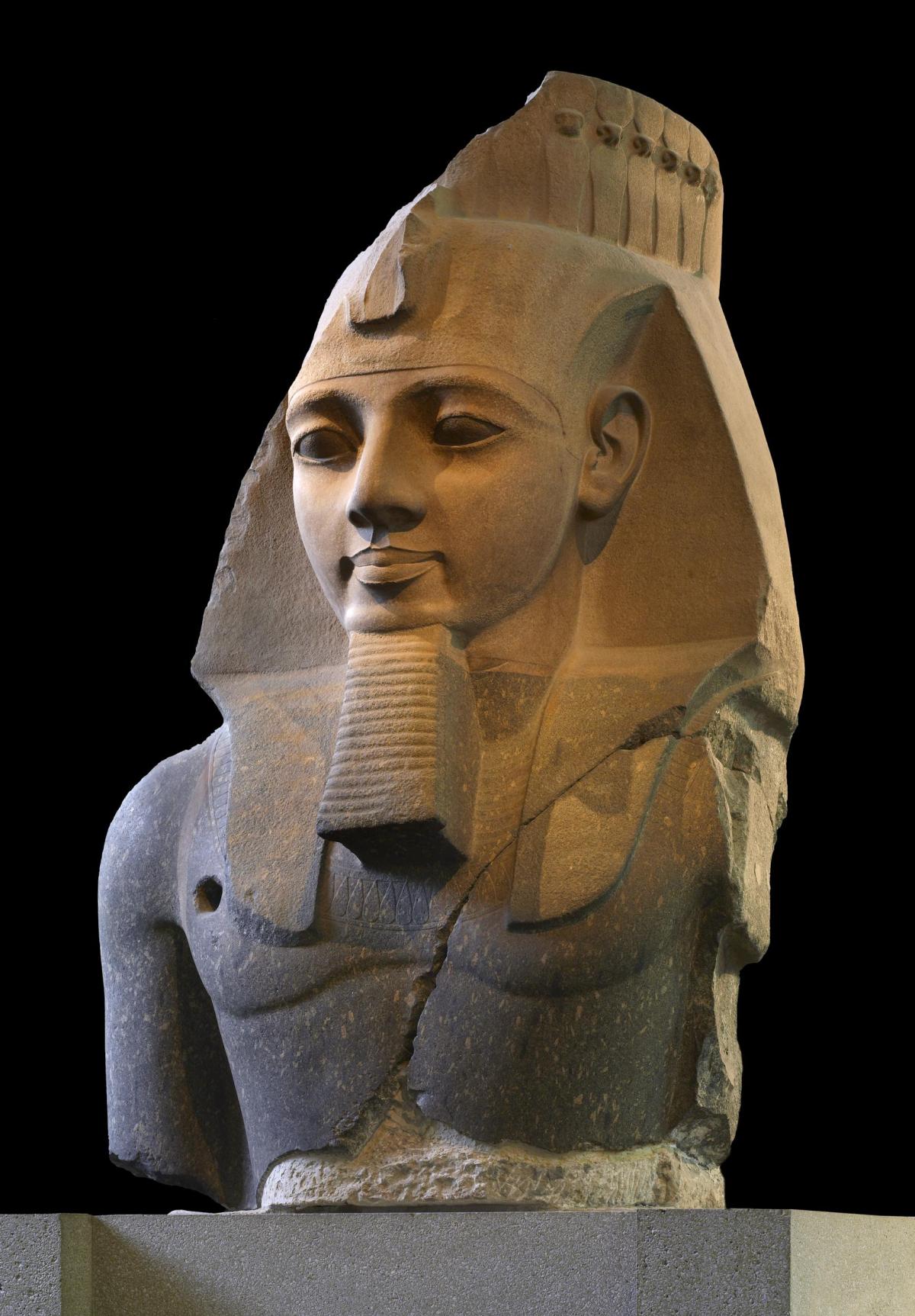"Younger Memnon" was a statue brought to the British Museum in 1817 of Ramses II, who was the third pharaoh of the Nineteenth Dynasty in Egypt. Made from granodiorite and red granite, the statue stands at 266.80 centimeters tall and 203.3 centimeters wide. Ramses II, also known as Ramses the great, was originally known as Pramesse but took the name of the king before him. At age ten, he was appointed commander in chief of the Egyptian army, but this title was largely ceremonial. During his mid-teens he officially was named the prince-regent and heir of his father. When he was twenty- five, his father died, and he became the sole ruler of Egypt. Ramses II was known for being a great warrior-pharaoh because soon after he became king, he continued the work of his father to restore the empire of Egypt which had shrunk in size after the reign of Akhenaten. He also engaged with several battles in Syria and Palestine, but his most famous was the Battle of Kadesh where Ramses charged into battle despite a surprise attack. This battle ended in a draw, but the empire was impressed with Rameses’s fearlessness. Besides being a warrior, Ramses was also known for his building of monuments. Temples were built throughout Egypt and Nubia during his reign, and he also built a new capital city for Egypt called Pi-Ramses. Ramses lived to be ninety years old, after having ruled for about sixty-seven years.
The ”Younger Memnon” statue and Ramses II story is important to our class as “Ozymandias” by Percy Shelley was inspired by the statue. The line a “traveler from an antique land” refers to Ramses II and Egypt. The remaining lines in the poem speak of the broken state of statue and the barren lands. Therefore, creating a sense of irony when the poet remarks that the pedestal is labelled “My name is Ozymandias, King of Kings, Look on my Works, ye Mighty, and despair!” Percy Shelley does not just end with that remark to shows the irony, instead he gives another line to emphasize the irony that says, “Nothing beside remains.” Therefore, showing that this egotistical ideology where one calls themself the best will never last long enough. Every kingdom falls and every king dies. Believing that one will continue after they die is simply too optimistic and egotistical. This then relates back to Ramses II who was widely known as a great ruler. He was known to be a warrior, long lasting ruler, who had monuments built in his name. Percy Shelley is communicating that this was futile because even if Ramses was the best king of that time, life moves on and kingdoms evidently fall. Those monuments that Ramses II built so lavishly have started to decay like the “Younger Memnon” statue or have been destroyed by time. Therefore, knowing the backstory to “Ozymandias” and Ramses II helps build this picture further of what used to be but what can never be no more since time is always moving on.
Works Cited
Edwards, Bruce. "'Osymandias' by Percy Bysshe Shelley." Salem Press Encyclopedia of Literature, 2019
Thompson, Stephen E. "Ramses the Great." Callipe, vol. 5, no. 1, 1994.
"Younger Menon." The Bristish Museum, 1817.


